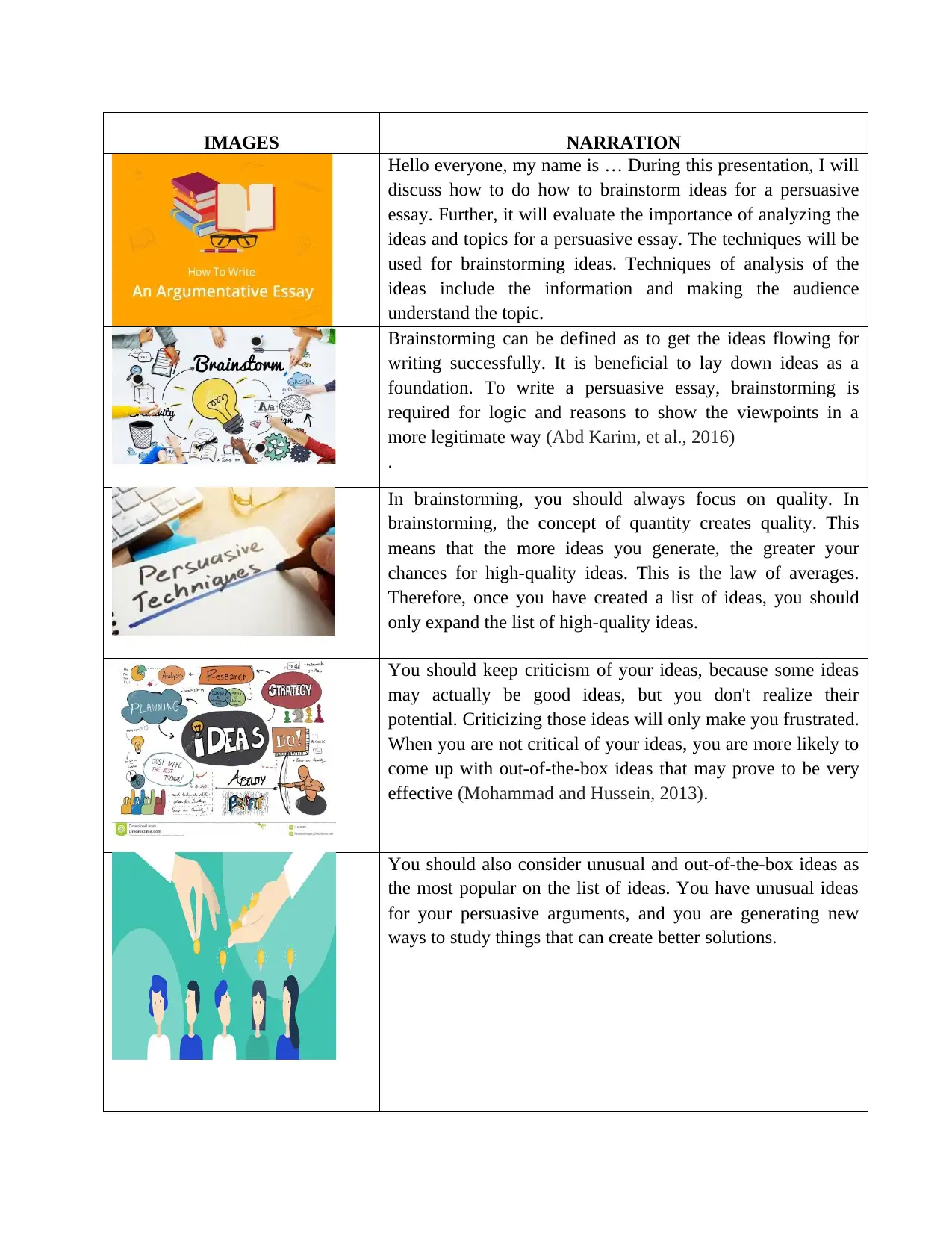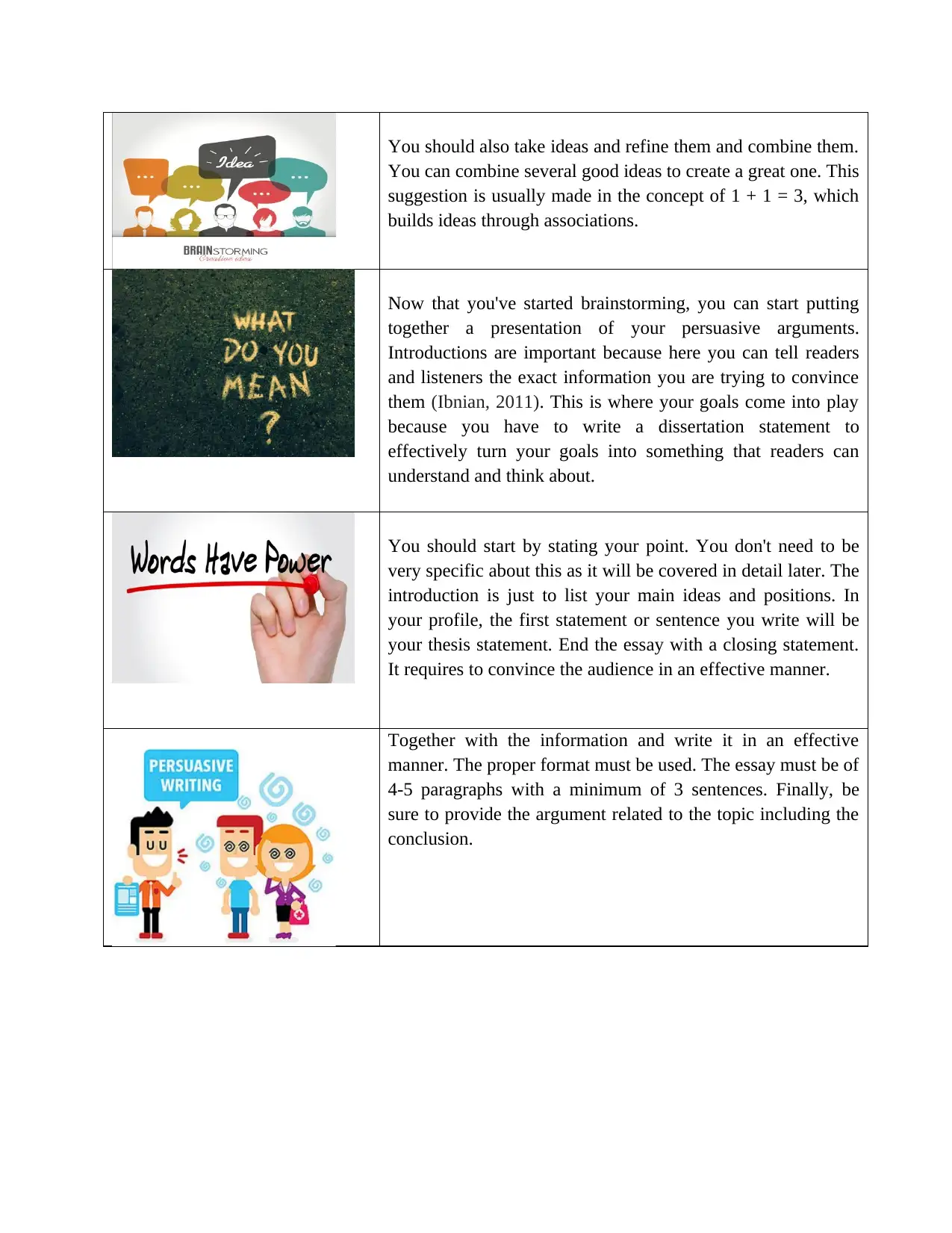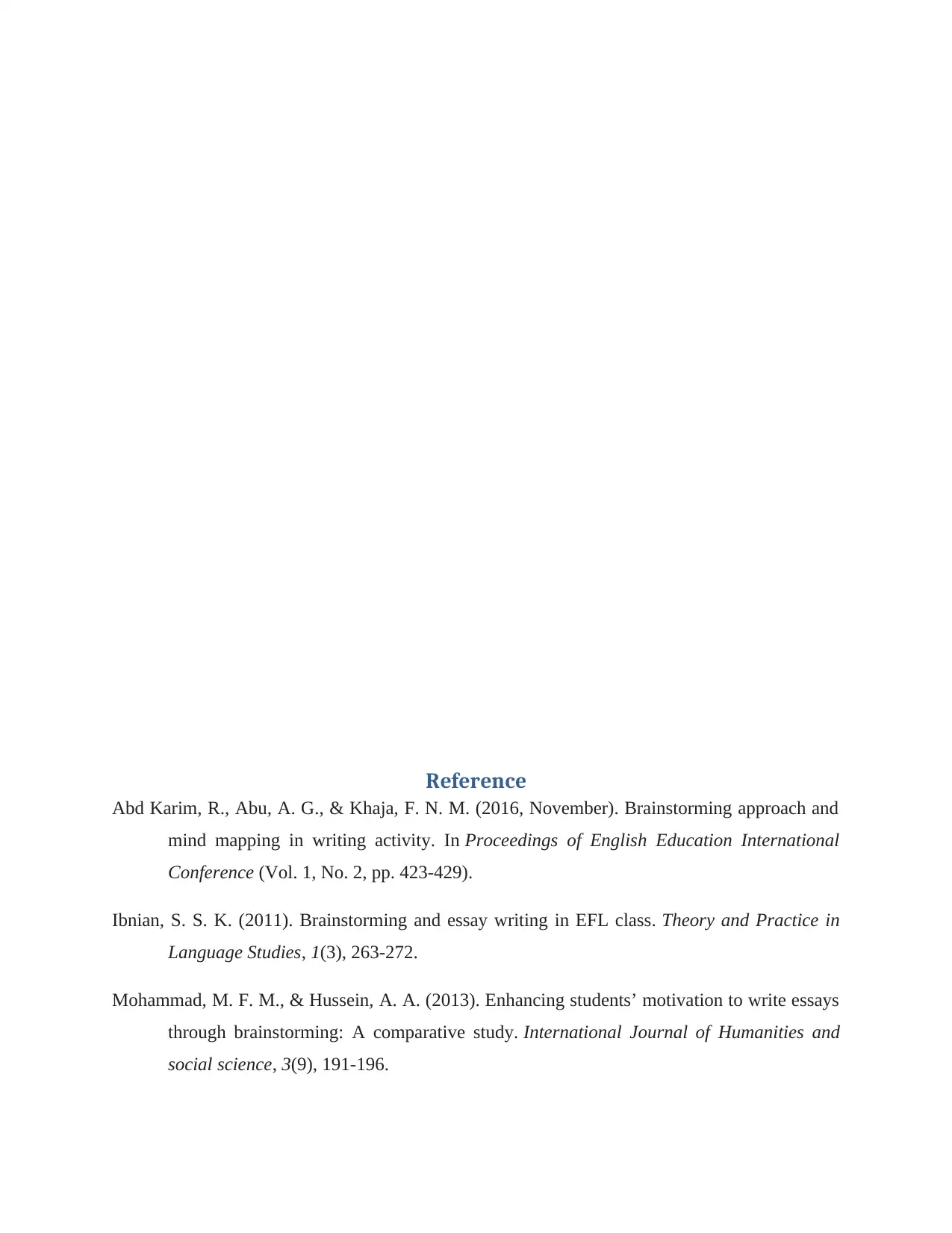Presentation: Brainstorming, Analysis, and Persuasive Essay Writing
VerifiedAdded on 2022/08/22
|3
|679
|15
Presentation
AI Summary
This presentation focuses on brainstorming techniques for writing persuasive essays. It begins by defining brainstorming and highlighting its importance in generating ideas and establishing a logical foundation for arguments. The presentation emphasizes the value of quantity in brainstorming, encouraging the generation of numerous ideas to increase the likelihood of high-quality concepts. It suggests avoiding criticism during the initial stages and embracing unusual ideas. The presentation also discusses refining and combining ideas to create stronger arguments, using the concept of 1 + 1 = 3. It then moves on to the importance of a well-crafted introduction, including a clear thesis statement. The presentation concludes by referencing relevant literature on brainstorming and essay writing, providing a comprehensive guide to persuasive essay preparation. The assignment includes the analysis of a manual, emphasizing clarity, ethical details, readability, and audience comprehension, referencing a website for finding manuals.
1 out of 3










![[object Object]](/_next/static/media/star-bottom.7253800d.svg)